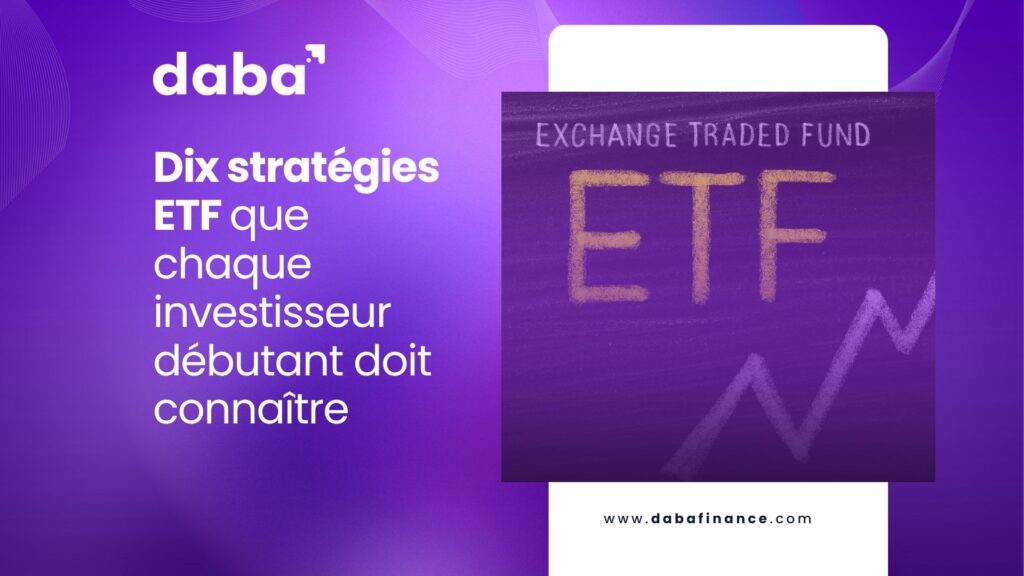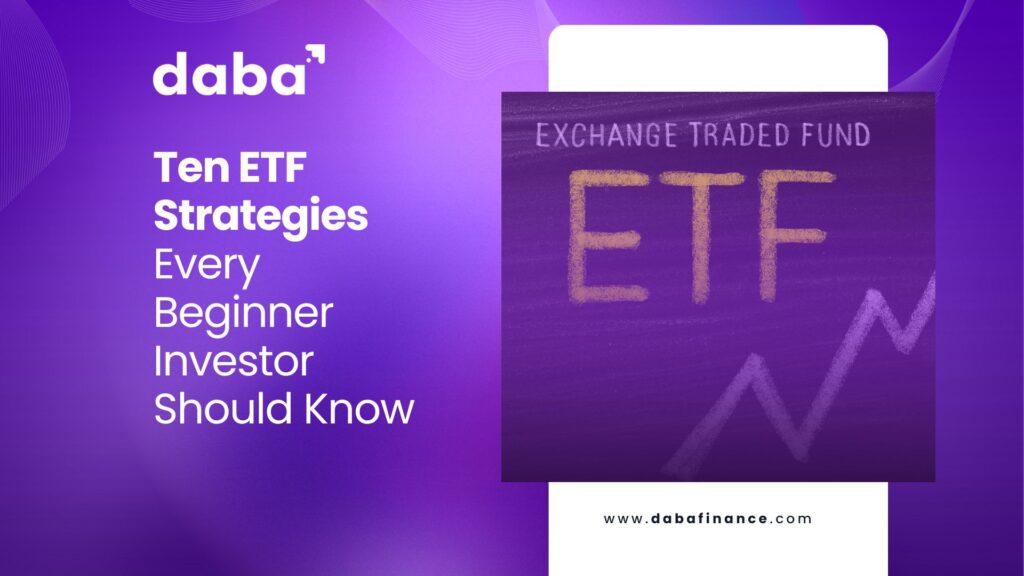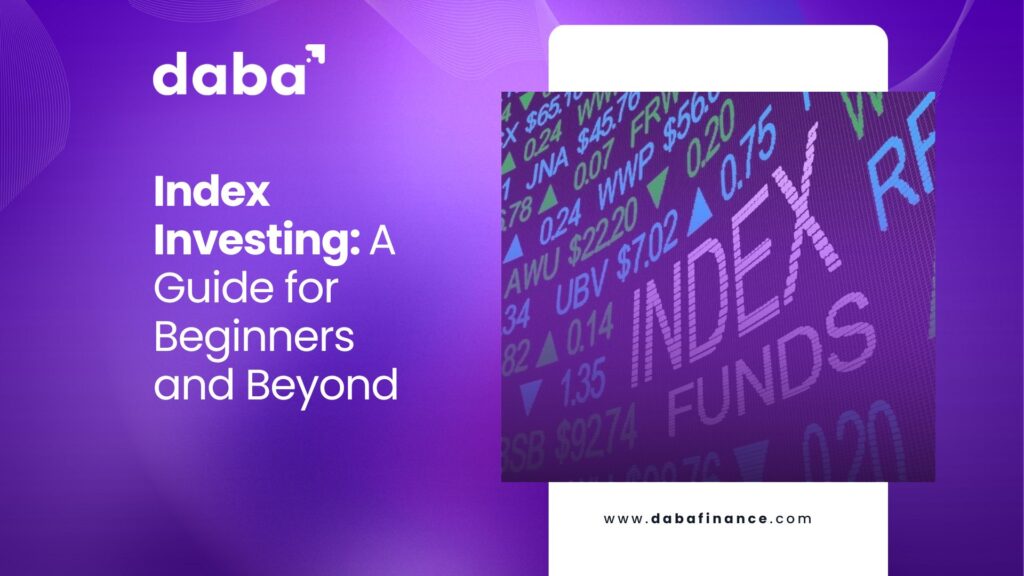Que vous débutiez votre parcours d’investissement ou que vous cherchiez à diversifier votre portefeuille, comprendre les stratégies ETF peut vous aider à prendre des décisions éclairées.
Les fonds négociés en bourse (ETF) ont révolutionné l’investissement, rendant l’accès au marché plus facile que jamais pour les débutants.
Que vous débutiez votre parcours d’investissement ou que vous cherchiez à diversifier votre portefeuille, comprendre les stratégies ETF peut vous aider à prendre des décisions éclairées.
Découvrons dix stratégies ETF particulièrement utiles pour les débutants, en nous concentrant sur le marché ouest-africain et comment les Collections Daba peuvent simplifier votre processus d’investissement.
1. Achat et Conservation
La stratégie la plus simple est souvent la plus efficace. L’investissement à long terme consiste à acheter des ETF et à les conserver pendant une longue période, généralement 10 ans ou plus. Cette approche profite de la tendance générale à la hausse du marché sur le long terme.
Par exemple, vous pouvez investir dans une Collection Daba qui reflète l’indice BRVM Prestige, qui inclut des entreprises ouest-africaines performantes telles qu’Oragroup (ORGT) et Sonatel (SNTS).
En conservant cette collection à long terme, vous pouvez potentiellement bénéficier de la croissance de ces leaders du secteur sans avoir besoin de négocier fréquemment.
2. Investissement Programmé (Dollar-Cost Averaging)
L’investissement programmé consiste à investir un montant fixe régulièrement, indépendamment des conditions du marché. Cette approche peut aider à réduire l’impact de la volatilité du marché sur vos investissements.
Avec les Collections Daba, vous pourriez mettre en place un investissement récurrent dans la Collection BRVM Industriel, qui comprend des entreprises comme Nestlé (NTLC) et Air Liquide (SIVC).
En investissant de manière constante, vous achetez plus d’actions lorsque les prix sont bas et moins lorsque les prix sont élevés, réduisant ainsi potentiellement votre coût moyen par action au fil du temps.
3. Allocation d’Actifs
L’allocation d’actifs consiste à diviser vos investissements entre différentes classes d’actifs pour équilibrer les risques et les rendements. Les ETF facilitent cela en offrant une exposition large au marché avec un seul investissement.
Avec les Collections Daba, vous pourriez répartir vos investissements dans différents secteurs de l’économie ouest-africaine.
Par exemple, vous pourriez investir 40% dans la Collection BRVM Industriel, 30% dans la Collection BRVM Agriculture et 30% dans la Collection BRVM Infrastructure. Cette diversification peut protéger votre portefeuille contre la volatilité d’un seul secteur.
4. Rotation Sectorielle
Les investisseurs plus avancés peuvent utiliser la rotation sectorielle, qui consiste à déplacer les investissements entre différents secteurs en fonction des cycles économiques. Bien que cela nécessite une gestion plus active, les Collections Daba simplifient cette approche en regroupant les actions par secteur.
Par exemple, en période de croissance économique, vous pourriez augmenter vos investissements dans la Collection BRVM Industriel.
En période d’incertitude économique, vous pourriez vous tourner vers des secteurs plus défensifs comme la Collection BRVM Distribution, qui comprend des entreprises qui performent bien même en période difficile.
5. Investissement en Dividendes
Pour les investisseurs cherchant un revenu régulier, l’investissement en dividendes peut être une stratégie attrayante. De nombreux ETF se concentrent sur les actions à dividendes élevés, offrant un flux de revenus stable.
Bien que les Collections Daba ne soient pas spécifiquement conçues comme des ETF à dividendes, la Collection BRVM Prestige inclut de nombreuses entreprises établies qui versent souvent des dividendes. En investissant dans cette collection, vous pourriez bénéficier à la fois de l’appréciation du capital et des revenus de dividendes.
6. Investissement Thématique
L’investissement thématique consiste à se concentrer sur des tendances ou des thèmes spécifiques qui, selon vous, façonneront l’avenir. Les Collections Daba offrent plusieurs options thématiques alignées sur les secteurs clés de l’économie ouest-africaine.
Par exemple, si vous croyez au potentiel de croissance de l’agriculture dans la région, vous pourriez investir dans la Collection BRVM Agriculture, qui inclut des entreprises comme Palm (PALC) et SAPH (SPHC).
7. Couverture (Hedging)
La couverture est une stratégie utilisée pour compenser les pertes potentielles d’un investissement en prenant une position opposée dans un autre. Bien que plus complexe, même les débutants peuvent utiliser des stratégies de couverture simples avec des ETF.
Si vous êtes fortement investi dans la Collection BRVM Industriel mais craignez un ralentissement économique, vous pourriez vous couvrir en investissant également dans la Collection BRVM Distribution, qui comprend des entreprises plus résilientes en période de défis économiques.
8. Stratégie Noyau-Satellite
L’approche noyau-satellite consiste à construire un portefeuille avec un noyau stable d’ETF de marché large, complété par des positions satellites dans des ETF plus spécifiques ou spécialisés.
Avec les Collections Daba, vous pourriez utiliser la Collection BRVM Prestige comme votre position de base, représentant les entreprises les plus performantes dans plusieurs secteurs.
Ensuite, ajoutez des positions satellites dans des collections plus spécialisées comme BRVM Agriculture ou BRVM Infrastructure en fonction de vos intérêts spécifiques ou des perspectives du marché.
9. Rééquilibrage
Le rééquilibrage est le processus consistant à réaligner votre portefeuille pour maintenir l’allocation d’actifs souhaitée. Au fil du temps, les performances des investissements diffèrent, et votre portefeuille peut s’écarter de son allocation initiale. Le rééquilibrage régulier aide à gérer les risques.
Avec les Collections Daba, vous pouvez programmer un examen de vos avoirs dans les différentes collections et ajuster si nécessaire pour maintenir l’équilibre désiré entre les secteurs.
10. Sortie Programmé (Dollar-Cost Averaging Out)
Tout comme l’investissement programmé peut être utilisé lors de l’achat, il peut également être utilisé lors de la vente. Cette stratégie, parfois appelée sortie programmée, consiste à vendre un montant fixe de vos investissements à intervalles réguliers.
Cela peut être particulièrement utile lorsque vous approchez d’un objectif financier et souhaitez réduire progressivement votre exposition au marché. Par exemple, si vous avez investi dans la Collection BRVM Industriel pendant des années et approchez de la retraite, vous pourriez commencer à vendre systématiquement de petites portions de vos avoirs au fil du temps.
À lire également : Présentation des Collections sur Daba : Une manière plus intelligente d’investir dans les actions
Les Collections Daba simplifient ces stratégies en offrant des groupes d’actions pré-curés basés sur les indices sectoriels de la BRVM. Cette approche permet aux débutants de mettre en œuvre facilement des stratégies d’investissement sophistiquées sans avoir besoin de recherches approfondies ou d’une expertise en sélection de titres.
N’oubliez pas que ces stratégies peuvent être des outils puissants pour la construction et la gestion de votre portefeuille d’investissements, mais il est important de prendre en compte vos objectifs financiers personnels, votre tolérance au risque et votre horizon d’investissement. Aucune stratégie unique ne convient à tout le monde, et la meilleure approche implique souvent une combinaison de stratégies adaptées à vos besoins individuels.


